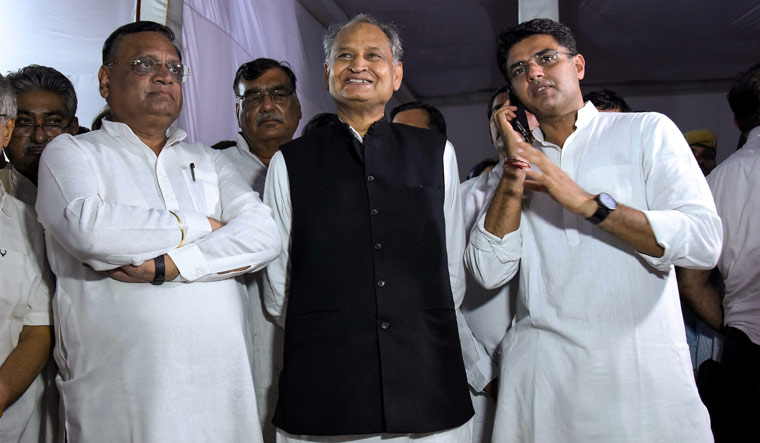The 'saffron wave' effortlessly swept through Rajasthan, despite the Congress’s win in the 2018 assembly elections. What is surprising is the ease with which the BJP won all the 25 seats, with all the candidates who contested winning by margins of more than two lakh votes.
The largest margin was 6.12 lakh by Subhash Chandra Baheria in Bhilwara, and the smallest was 2.1 lakh votes by Devaji Patel from Jalore. According to the Election Commission, the BJP’s vote share increased from 54.94 per cent in 2014 to 58.47 per cent this time.
ALSO READ: Modi and Amit Shah pave way for saffron sequel
Most exit polls did predict a BJP sweep, but only a few expected that the Congress would fail to secure even one seat.
One of the contributing factors to this sweep could be the lacklustre campaign by the Congress. It mainly focused on the proposed NYAY scheme, and tried to malign the Modi government through allegations of corruption in the Rafale deal. They also tried to imitate the BJP by giving incentives to build cow-shelters, and promised to felicitate people who adopted cows.
also read
- Panel pulls up Centre for failing to give EVM-VVPAT tally data for 2019 Lok Sabha polls
- Defeated by BJP's EVM hacking, party sabotage: Congress candidate
- Gehlot in damage-control mode after blaming Pilot for Jodhpur loss
- 'Priyanka did her job, but party, workers could not rise to occasion'
- EVMs a must for democracy, can't be tampered with: BEL CMD
Five of the candidates fielded by the Congress had lost the assembly elections in December. For instance, Ratan Devasi, who had lost the past two assembly polls took on Devji Patel, a sitting MP who had won twice.
The Congress were also hurt by instances of in-fighting, like the Ashok Gehlot-Sachin Pilot tussle for the chief minister post. Even measures like setting up a “war room” in Rajasthan didn’t help mitigate the impact of the lacklustre campaign.
They suffered surprising defeats in Alwar and Ajmer, given their comfortable wins there in the 2018 by-elections.
The BJP, on the other hand, was much more proactive in their campaign, and allied themselves with the emerging Jat party, the RLTP (Rashtriya Loktantrik Party) and also garnered support from the tribal factions through the Bharatiya Tribal Party (BTP). They also seized the opportunity to align themselves with the rising Gujjar agitation. This strategy ultimately proved victorious.
With inputs from Varun Ravikumar



